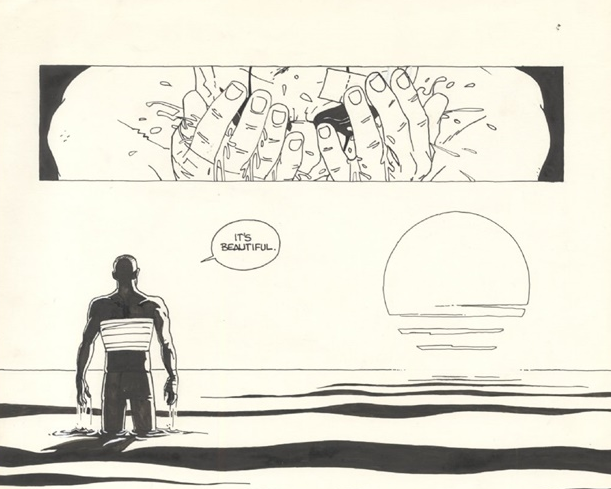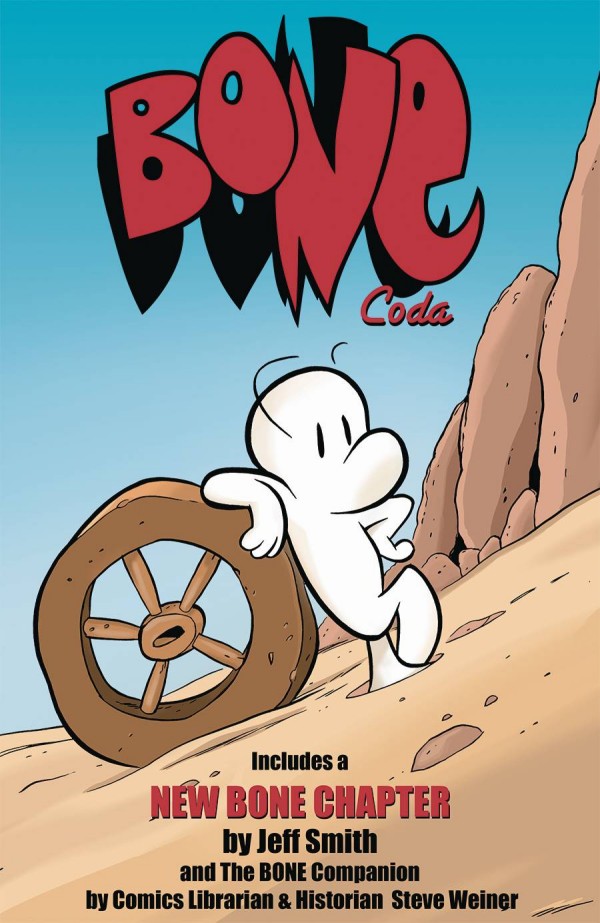Today, I'm featuring an interview with Dylan and Harley Acres, who run the English Rumiko Takahashi fansite, The Rumic World. They have a wealth of information about Rumiko Takahashi and her many creative works over at the site, which is now celebrating their 15th anniversary! (The fact that there's been a fansite for Takahashi for 15 years now just shows how instrumental she was in being part of the entry of manga into the US comics market!)
As huge Rumiko Takahashi fans, I thought it would be neat to get their take on some things relating to Takahashi. They were gracious enough to take some time out of their day and answer a few questions for me, which are listed below. Please check out their site for even more great stuff relating to Rumiko Takahashi, and be sure to thank them for taking the time to share their thoughts with us here at part of the Takahashi Manga Movable Feast!
Panel Patter: First of all, thank you for agreeing to the interview! Here are some questions that I have for you:
Panel Patter: Promote yourselves for a minute! What kinds of things can a reader find on Rumic World?
Harley: Yeah, most of our criticism is reserved for our messageboard posts. Like Dylan said we're celebrating 15 years at Rumic World, but our messageboard has been around 10 years as well. We've probably discussed every conceivable Takahashi topic ad infinitum there, but there are always new fans discovering her work who are hearing some things for the first time. Seeing new fans come along and get excited about her work, especially if they want to discuss it or frame it in the larger context of her overall work is still thrilling to me.
Dylan: She inducted us into anime and manga culture. We're 29, so of course we saw stuff like Voltron on TV as kids, but had no idea that it was anime. Takahashi was the first person who I read and knew, okay this is a comic book from Japan. As to why I stuck with her and have invested so much time and energy into not only following her works but spending almost half of my life building a website to her creations...she just keeps surprising me. Her stories are so interwoven into my life, to be able to say "Oh this is what I read when I was 12, this is the story I read when I finished high school, or got my Master's Degree." Her work is what I compare every other manga I read to. Her sense of humor, her artistic style. She's the measuring stick for me.
Panel Patter: Why Rumiko Takahashi? There are so many great artists. What made you decide to take the time and effort to put together such a comprehensive fan site for her?
Harley: And back when we started the site in 1996 there wasn't a wealth of knowledge in terms of "X mangaka is more than a one hit wonder." Takahashi was one of the few mangaka who, even in America, it was clear had a lot of hits under her belt. Ryoichi Ikegami and Masamune Shirow were probably the only other artists who had multiple series being published in America at the time, but Takahashi was the one who appealed to us and introduced us to the world of manga and anime.
Panel Patter: What was the first Takahashi manga you read? How did you find it?
eventually Dylan started picking up Maison Ikkoku, since Ranma ½ was sort of viewed as "my" series, he wanted to a find a series of his own and chose Maison Ikkoku. From there we started buying what was available of Urusei Yatsura as well. This was pre-1996... pre-Inuyasha.
Panel Patter: If you had to select a starting place in the Takahashi cannon for a new reader, where would you begin?
Dylan: That's a good question! It's sort of hard to answer though. I think for American readers, it would have to be Ranma 1/2. I think its the most compatible with an American sense of humor. But her current series, Kyokai no Rinne, is her return to comedy and I think there's a lot to like there too.
Panel Patter: What is your favorite Takahashi series and why?
Dylan: Maison Ikkoku is definitely my favorite. No other manga has ever moved me as much as it did. And when I discovered it I was 15 and saw a lot of myself in Godai. That's actually a comment I've heard from almost every guy that's gotten into Maison Ikkoku, and I think thats a testament to how universal Takahashi's characters are. That their personalities and flaws are universal.
Panel Patter: So many of Takahashi's comics have been made into anime and live-action movies. Why do you think that is, and do you have a favorite?
Harley: And as for the live-action stuff in terms of Maison Ikkoku and One-Pound Gospel, they have a lot of universality to them and bring to light the magic of everyday life. Those manga were the first that I ever read that were about ordinary people doing ordinary things. As a kid I read Marvel comics like X-Men and I was ready for something different, and the reality of those two works in particular were incredibly refreshing to me.
Panel Patter: Obviously, Takahashi's comics were a big part of the early wave of manga to reach the United States in translation. Do you think that Rumiko Takahashi has relevance in today's manga world, given that her style and topics tend to be different from, say, Black Butler, to name one title that's extremely popular right now?
Dylan: I hate to say that her time has come and gone, but I think that may be true. What's popular in America right now isn't really Takahashi's style. But that may be true in Japan as well. Takahashi's in her mid-50s and is writing for little boys. She's said herself that there's only so long she can credibly do this. I think there's some truth to that, but at the same time, I wouldn't ever want her to stop writing shonen manga.
Panel Patter: Obviously, Takahashi's comics were a big part of the early wave of manga to reach the United States in translation. Do you think that Rumiko Takahashi has relevance in today's manga world, given that her style and topics tend to be different from, say, Black Butler, to name one title that's extremely popular right now?
Harley: I think she'll always be popular and have influence, but I don't know if it will ever be that Urusei Yatsura/Maison Ikkoku level of zeitgeist that existed in the 1980s. It's like Mitsuru Adachi, he's a work horse who consistantly makes popular series even today, but people will always look at Touch as his pinnacle. I think that's just the natural order of things. So I can't say she'll ever be a trendsetter again, but she'll always be a big deal. She'll aways make hits.
Panel Patter: Related to the question above: Do you still find a lot of new people coming to Rumic World, or is it mostly a place for people like myself, who have a strong and long-standing attachment to Takahashi'scomics?
how consistently great she is.
Harley: And when the a new anime starts up that always gives us a big surge of exposure. I remember when InuYasha started on Adult Swim our site crashed and we had to move to a better server. A lot of old fans started coming around when the recent OVAs of Urusei Yatsura, Ranma ½ and InuYasha came out a few years ago. I think we'll see another bit
flood of new people when Kyokai no Rinne gets an anime.
Panel Patter: On a more general level, with so many layoffs and closures from just about everyone from Dark Horse to Tokyopop, what do you think the future of translated manga is in the English-speaking world?
Dylan: I'm actually optimistic. I don't think the industry will ever be the size it was 6 or 7 years ago, but I think it's probably settled. The companies that are here now I don't worry about. Dark Horse and Viz in particular have been doing things so well for so long that I think they can survive. I'm interested in seeing how Kodansha handles themselves. Tokyopop was such a weird entity. I can honestly say I never bought a single book by Tokyopop. I found their
flood of new people when Kyokai no Rinne gets an anime.
Panel Patter: On a more general level, with so many layoffs and closures from just about everyone from Dark Horse to Tokyopop, what do you think the future of translated manga is in the English-speaking world?
production values so shoddy compared to Viz, Dark Horse, Vertical, etc.
Harley: And Viz is actually using Takahashi to pioneer their new concept of releasing Kyokai no Rinne on the same day as it appears in Japan. I think that's just astounding honestly. And it's not Naruto, it's not One Piece or Bleach or any Shonen Jump series that's getting that treatment, it's Takahashi. I was really excited when they announced that and proud that they used her to introduce that new avenue of distribution. In terms of layoffs and changes though, I
do feel bad that Gerard Jones, who was the rewritter of all of Takahashi's manga at Viz from the very beginning isn't involved in Kyokai no Rinne, but I assume that's due to the frequency of its release more than anything.
Dylan: One of the reasons we work so hard on Rumic World is that I think its important to remember who really made manga in the US. And to me, it was one person more than anyone else. Rumiko Takahashi. She definitely made Viz what it was long before they had Dragon Ball and Pokemon making insane money. There was a reason why you could go to a comic book store and get a different Takahashi series every week. She's the true beginning of the popularization of manga in the US.
do feel bad that Gerard Jones, who was the rewritter of all of Takahashi's manga at Viz from the very beginning isn't involved in Kyokai no Rinne, but I assume that's due to the frequency of its release more than anything.
Panel Patter: Let's jump 50 years into the future. What will Rumiko Takahashi's legacy be when it's time to turn her over to the comic historians, both in the English world and in Japan?
Harley: Yeah, I think in terms of Western comic historians that will be her major contribution. In Japan I think she'll be looked to as one of the pioneers of the harem genre perhaps and the love comedy boom of the 1980s. She definitely opened the door for women like Hiromu Arakawa and Yellow Tanabe to tackle shonen manga.
Dylan and Harley: This was a lot of fun! Thanks so much for thinking of us!
Panel Patter: My pleasure! Enjoy the Rumiko Takahashi MMF!







